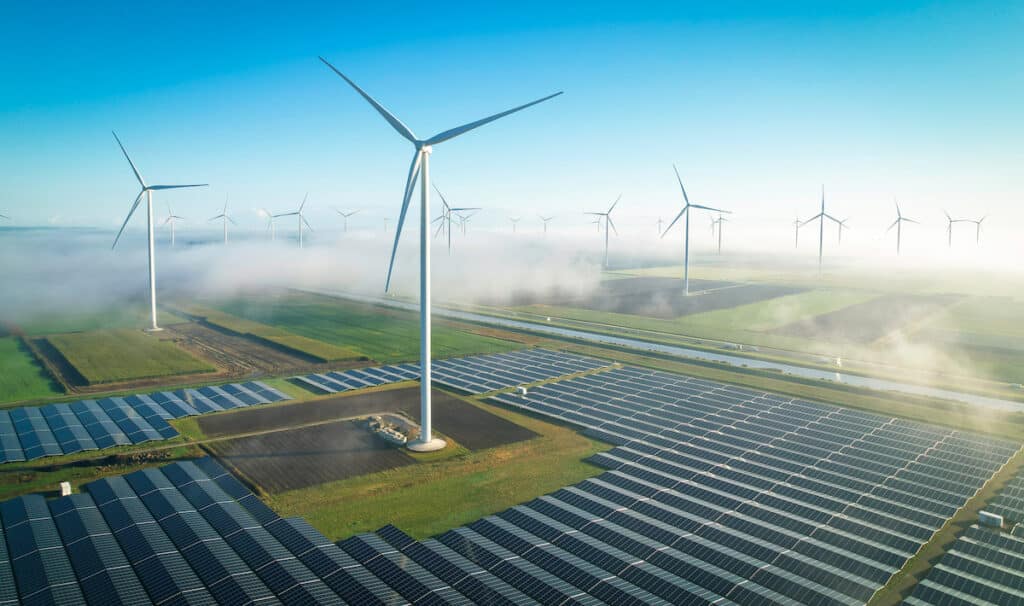This post was originally published on Eco Watch
The landscape of the solar industry is changing rapidly. Amid supply chain constraints, political battles, and groundbreaking legislation, solar continues to gain popularity in the U.S.
To celebrate how far the industry has come and has still to go, here are our top solar energy statistics, fully updated for 2023.
Statistics About the Potential of Solar Energy
Sunlight, a renewable source of energy, is the greatest source of potential energy on earth. However, only a fraction of the potential energy in sunlight that reaches the Earth is captured and used to generate electricity.
- Every hour and a half, enough sunlight reaches the earth’s surface to meet the world’s energy needs for an entire year.
- The U.S. has enough renewable energy resources to generate 100 times the country’s electricity needs annually.
- Solar power has more potential for electricity production in the U.S. than any other renewable energy source.
- Despite this, renewable energy technologies in the U.S. harnessed only 0.2% of the total renewable energy potential available in 2020.
- Only 0.03% of the solar energy available in the U.S. is harnessed to generate electricity. The U.S. Department of Energy found that, of the solar energy technologies assessed, only 133 terawatt-hours of solar energy were produced in 2020 despite 386,646 terawatt-hours of potential solar energy being available.
Watch Below: Learn which countries are generating the most solar energy today and how each country’s solar production has trended over the last 30 years.
Statistics About Solar Energy Usage Today
Ongoing global supply chain issues and logistical challenges stalled growth in renewable energy through 2022 and the beginning of 2023. Despite this, the solar industry continues to thrive.
- About 3.4% of the electricity generated in the U.S. is powered by solar energy, up from 2.8% in 2021.
- Solar accounted for 15.9% of electricity generated by renewable sources in 2022, up from 13.5% in 2021.
- On average, a residential solar system costs $10,290–$20,580 in the U.S.
- Forty-five percent of the capacity added to the U.S. electrical grid in the first half of 2023 was from solar.
- New renewable capacity additions are set to increase by 107 GW in 2023, the largest increase ever. Record-breaking growth despite supply chain bottlenecks, construction delays, and high prices for raw materials and commodities shows the resilience of the renewable energy industry.
- While solar prices are projected to decrease in 2024, they are expected to remain 10-15% higher than 2020 levels. These higher costs can be attributed to strong demand, supply chain issues, and higher costs for freight, polysilicon, and metals.
- Although solar has become more expensive in 2022 and 2023, the cost of non-renewable sources of energy like oil, natural gas, and coal have increased even more rapidly.
- Nearly 12 GWdc were installed in the first half of 2023, representing growth from 2022. This is a reversal of the reduction the industry experienced in 2022.
Statistics About the Future of Solar Energy
Favorable legislation and high demand for renewable energy sources mean the future of solar energy in the U.S. looks bright.
- Solar is set to account for 67% of the growth in renewable energy capacity in 2023.
- New solar additions are expected to break another record in 2023 with a nearly 200-gigawatt increase.
- The Inflation Reduction Act (IRA), passed in August 2022, further incentivizes solar installations. Experts expect to see a 40% increase in solar installations between 2023 and 2027 because of the IRA.
- Experts expect ongoing supply chain constraints within the solar industry to prevent Americans from realizing the full benefits of the IRA until at least 2024.
- The global manufacturing capacity of solar PV is projected to reach nearly 1,000 GW in 2024.
Statistics About Solar Jobs
The solar industry in the U.S. has grown by more than 200 times over since the solar Investment Tax Credit (ITC) was introduced in 2006. The solar industry has added billions of dollars to the U.S. economy and has created hundreds of thousands of jobs.9
- As of 2022, the U.S. solar industry employs more than 346,000 employees who spend at least half their time on solar.
- The number of solar workers in the U.S. increased by 3.7% between 2021 and 2022. That’s 12,256 jobs added.
- The number of people employed by the solar industry increased in 42 states in 2022. California added the most with 2,404 new solar jobs.
- Solar is the electric power generation technology that employs the most workers. There were 12,000 new jobs in solar in 2022 (+3.7% growth).
- The amount of women working in the solar industry has increased from 27% in 2017 to 31% in 2022. However, women are still underrepresented in the solar industry, as only 31% of solar employees are women (despite representing 47% of the workforce).
- Minorities are also underrepresented in the solar workforce, especially African Americans. Just 9% of solar employees are African American (despite representing 13% of the workforce.
- In 2022, 44% of solar industry employers said it was “very difficult” to find qualified applicants—the highest such percentage ever recorded in the Solar Jobs Census.
- The solar industry is an industry of opportunity for veterans. 8% of all solar employees are veterans, compared to 5% of the U.S. workforce.
The post Top 25 Solar Energy Statistics for 2023 appeared first on EcoWatch.





0 Comments